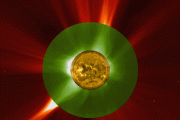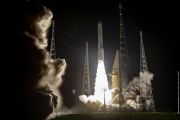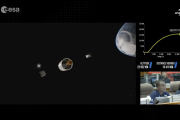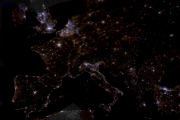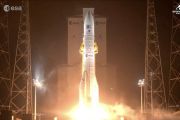
Copernical Team
Untangling the ocean biological carbon pump
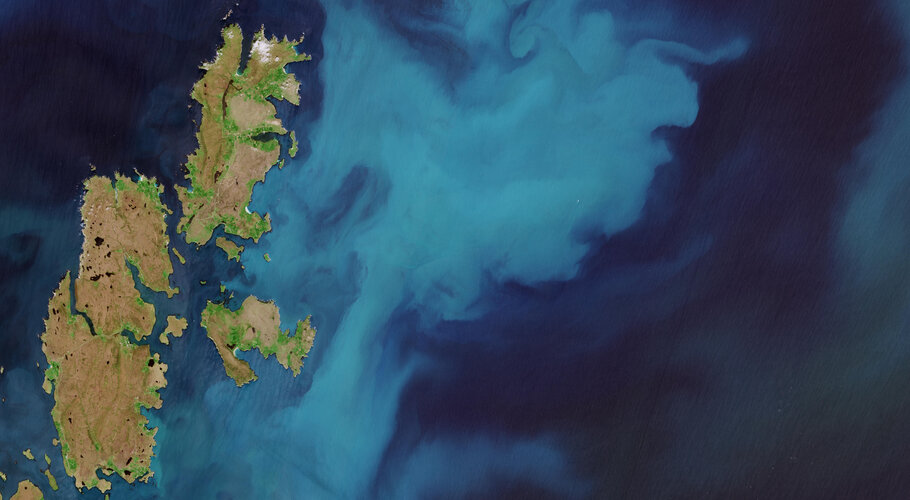
They may be microscopic, but their ability to sequester carbon is phenomenal. We are talking phytoplankton – and scientists working on a project funded by ESA are assessing different aspects of the role that these tiny plants play in the ocean carbon cycle to better understand climate processes.
Practice makes perfect
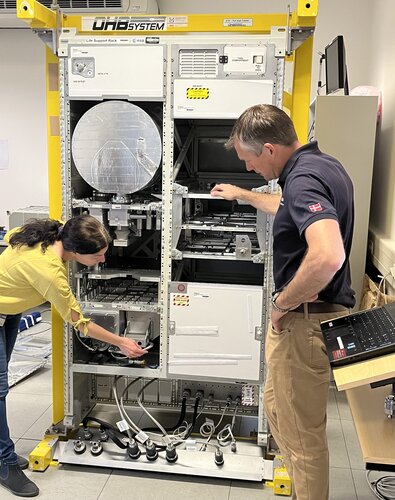 Image:
Practice makes perfect
Image:
Practice makes perfect Beam-hopping JoeySat ready for launch
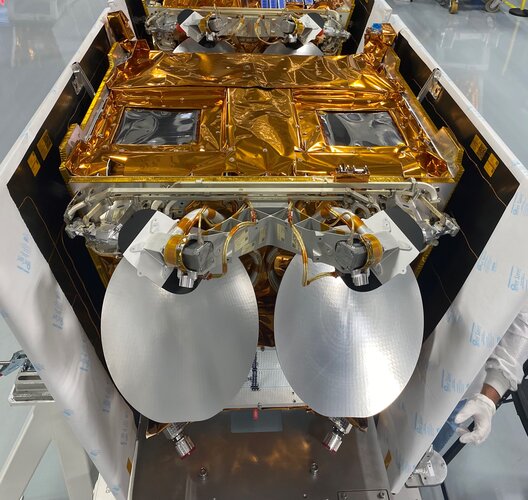
An advanced broadband satellite that will provide high-speed internet connectivity from low Earth orbit has left OneWeb Florida Facilities to Vandenberg launch pad.
New membrane mirrors for large space-based telescopes
 Researchers at the Max Planck Institute for Extraterrestrial Physics have developed a new way to produce and shape large, high-quality mirrors that are much thinner than conventional mirrors used for space telescopes. The resulting mirrors are flexible enough to be rolled up and stored compactly inside a launch vehicle.
"Launching and deploying space telescopes is a complicated and costly
Researchers at the Max Planck Institute for Extraterrestrial Physics have developed a new way to produce and shape large, high-quality mirrors that are much thinner than conventional mirrors used for space telescopes. The resulting mirrors are flexible enough to be rolled up and stored compactly inside a launch vehicle.
"Launching and deploying space telescopes is a complicated and costly First pair of second-generation weather satellites, built by Airbus, enter their test phase
 The Airbus built satellite twins, MetOp-SG A and B will provide a panoply of new meteorological data that will substantially improve numerical weather prediction - the backbone of our daily weather forecasts - at regional and global levels. The multiple instruments on-board will also provide key observations for climate monitoring, atmospheric chemistry and other services such as air pollution,
The Airbus built satellite twins, MetOp-SG A and B will provide a panoply of new meteorological data that will substantially improve numerical weather prediction - the backbone of our daily weather forecasts - at regional and global levels. The multiple instruments on-board will also provide key observations for climate monitoring, atmospheric chemistry and other services such as air pollution, EUMETSAT's Data Lake - key element of DestinE has been kicked off
 Data Lake, a massive repository of data managed by EUMETSAT, will provide the foundation for "Destination Earth" - a European Union's flagship initiative of digital Earth modelling contributing to the European digital and green transformation. CloudFerro, the prime contractor for the project, has announced that the first phase of works has already started, and is planned to be completed by June
Data Lake, a massive repository of data managed by EUMETSAT, will provide the foundation for "Destination Earth" - a European Union's flagship initiative of digital Earth modelling contributing to the European digital and green transformation. CloudFerro, the prime contractor for the project, has announced that the first phase of works has already started, and is planned to be completed by June Planet joins Ursa Space's Virtual Constellation and Partner Network
 Ursa Space Systems, a global satellite intelligence infrastructure provider, has announced that Planet Labs PBC (NYSE: PL), a leading provider of daily data and insights about Earth, will join its Virtual Constellation and Partner Network.
The addition of Planet provides Ursa Space customers with access to daily satellite data that unlocks solutions to some of the most pressing challenges
Ursa Space Systems, a global satellite intelligence infrastructure provider, has announced that Planet Labs PBC (NYSE: PL), a leading provider of daily data and insights about Earth, will join its Virtual Constellation and Partner Network.
The addition of Planet provides Ursa Space customers with access to daily satellite data that unlocks solutions to some of the most pressing challenges Analysing global waste distribution via dumpsite detection from satellite imagery
 With the advancement of global civilization, monitoring and managing dumpsites have become essential parts of environmental governance worldwide. However, dumpsite locations are difficult to pinpoint in a timely manner by local government agencies and environmental groups.
A study published in Nature Communications describes an efficient and intelligent dumpsite detection technique and ana
With the advancement of global civilization, monitoring and managing dumpsites have become essential parts of environmental governance worldwide. However, dumpsite locations are difficult to pinpoint in a timely manner by local government agencies and environmental groups.
A study published in Nature Communications describes an efficient and intelligent dumpsite detection technique and ana Apex's Aries spacecraft set for launch on SpaceX's Transporter-10 Mission
 Apex, the Los Angeles-based spacecraft mass manufacturing company, announced its flagship product, the Aries satellite bus, will fly for the first time on SpaceX's Transporter-10 mission, which is targeted for no earlier than January 2024.
Apex builds productized satellite buses, starting with their flagship Aries spacecraft, capable of a maximum 200kg wet mass. Apex spacecraft are produce
Apex, the Los Angeles-based spacecraft mass manufacturing company, announced its flagship product, the Aries satellite bus, will fly for the first time on SpaceX's Transporter-10 mission, which is targeted for no earlier than January 2024.
Apex builds productized satellite buses, starting with their flagship Aries spacecraft, capable of a maximum 200kg wet mass. Apex spacecraft are produce D-Orbit signs contract with ESA for IRIDE Satellite Observation Program
 Space logistics and orbital transportation company D-Orbit signed a 26-million euro contract with the European Space Agency (ESA) for IRIDE, a space-based observation program initiated by the Italian government that will leverage national competencies and responsibility with the support of the European Space Agency (ESA), which will manage the project, and the Italian Space Agency (ASI) under th
Space logistics and orbital transportation company D-Orbit signed a 26-million euro contract with the European Space Agency (ESA) for IRIDE, a space-based observation program initiated by the Italian government that will leverage national competencies and responsibility with the support of the European Space Agency (ESA), which will manage the project, and the Italian Space Agency (ASI) under th 


























